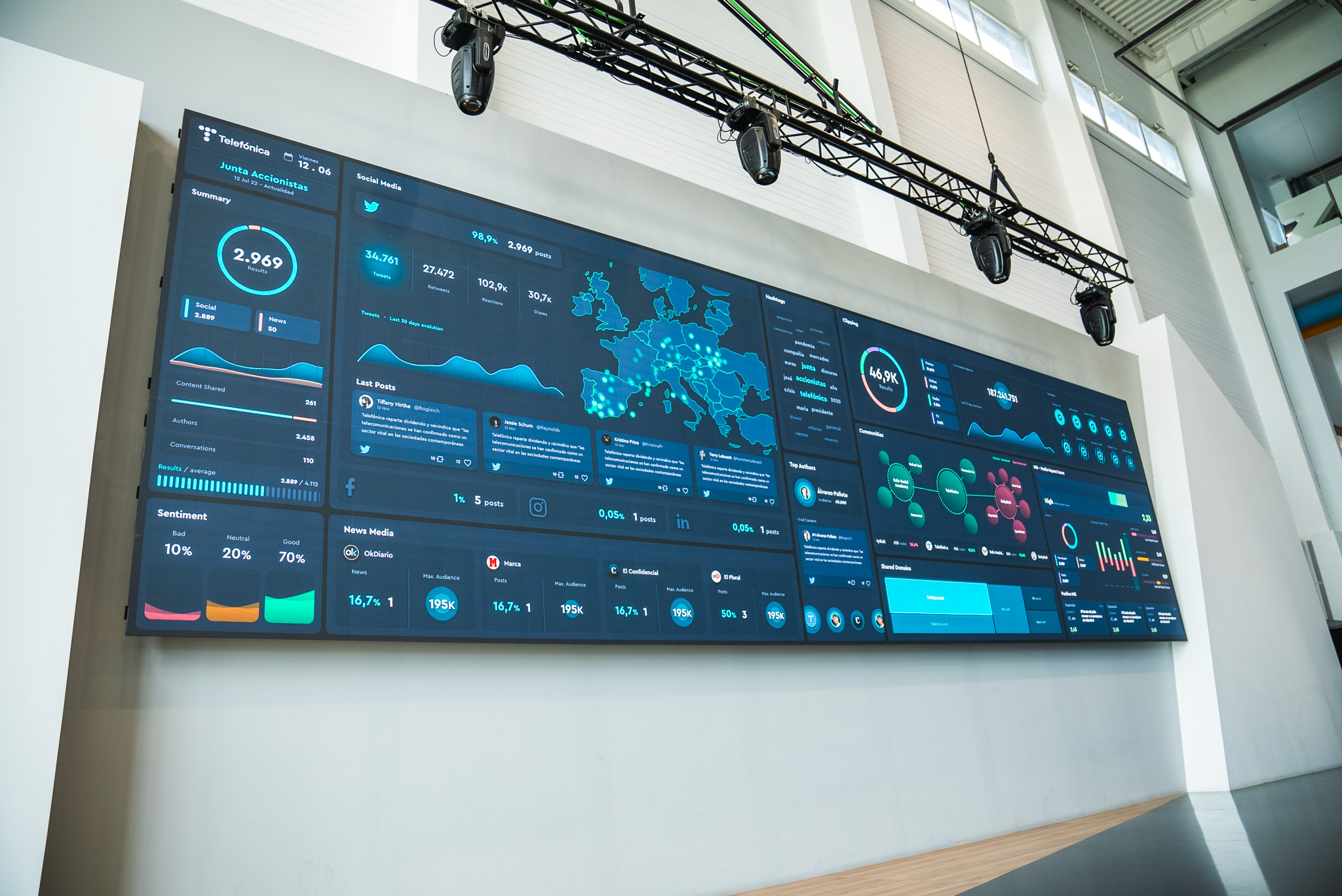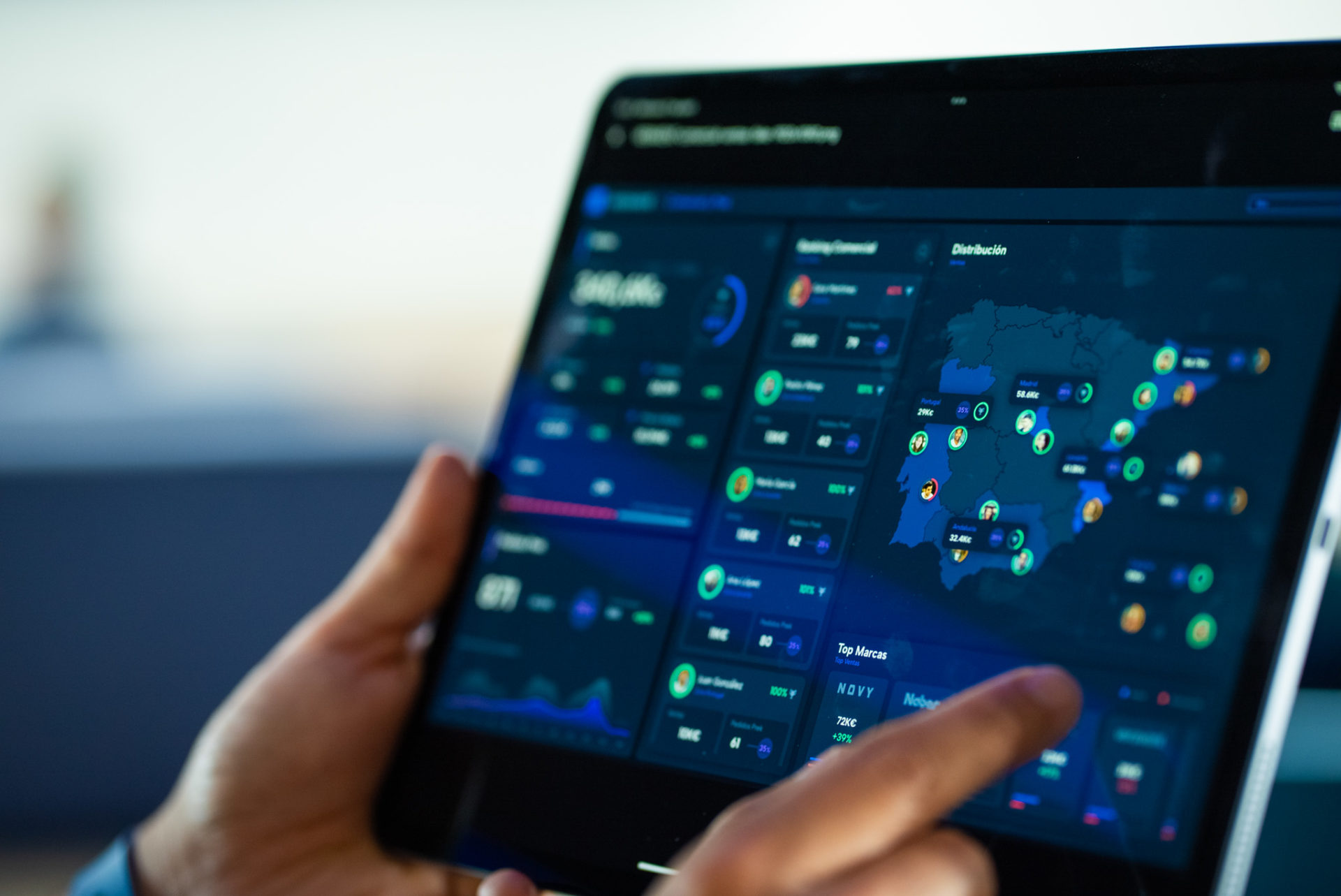What is a SMART KPI and how to visualize it in a dashboard

When the time comes to define a company’s objectives and key performance indicators (KPI), we must ensure that they help us reach our objectives. In other words, that they are relevant metrics.
We navigate in data. Companies generate it constantly and decisions must be made immediately. We live in an era where we are late for everything, where we need things more urgently than ever. How do we meet this challenge when it comes to making decisions? By relying on intelligent key performance indicators (KPIs), also known as smart KPIs.
Let’s explore what Smart KPIs are and how to effectively visualize data in a customized dashboard to drive strategic decision making in your team.
What are Smart KPI?
SMART objectives or Smart KPIs are metrics or key indicators that help communicate what is happening in the company. They are aligned with objectives and are designed to be SMART, i.e. measurable, specific, achievable, relevant and timely.
These Smart KPIs are indicators that go beyond measuring performance; they provide valuable information on progress and evolution towards specific goals. In addition, they help us identify critical points, areas for improvement and detect real opportunities for improvement and growth.
The advantage of the digital era is that absolutely everything can be measured and, therefore, improved. Thus, thanks to Smart KPIs we will be more realistic and we will make decisions according to our real situation and circumstances. We make sure that we are on the right track, that we do not depend on opinions or intuition: we measure, analyze, conclude and make the right decisions.
Smart KPI characteristics
Smart KPIs help to easily and accurately convey what is really going on in our company. This measurement method was developed by George T. Doran in 1981.
SMART objectives are small steps that we achieve along the way within a well-defined strategy to reach our goals. An objective could be: “to get more leads”; however, if we want it to be a SMART objective, we should define it a little more. For example: “to get 10% more leads in the second quarter of the year at national level”.
Personally, if our goal was to run a marathon, we would have it very clear. The smart KPIs would be the location, the number of kilometers we have run and those we have left to reach the finish line, the time, heart rate, etc. A few indicators that we have at our fingertips and that, at a glance, allow us to make decisions and know if we are doing well, if we are doing badly, if we should do a sprint at the end to be in a better position, etc.
The characteristics of Smart KPIs, therefore, are as follows:
S: Specific
A very general or broad goal is useless. This does not help us to focus or to delimit the next actions, since we do not have clarity. It also makes it very difficult for us to analyze it. Vagueness leads to errors and misunderstandings. It is as if we started a hiking route without knowing how many kilometers it is, how much it will cost us to reach the end, how much water and food I should take with me, etc. It is like jumping into the void without knowing what lies ahead. The same thing happens in companies, we need to land and specify what we want to achieve.
Example of a specific SMART objective. Imagine that Batman has the goal of “protecting Gotham City”. To be more specific, Batman can limit his objective to “stop The Joker’s plan to blow up Wayne Tower”. This way, Batman can better focus on his objective and prioritize stopping The Joker over other secondary activities, such as repairing the Batmobile or patrolling Gotham’s alleys.
M: Measurable
What cannot be measured, cannot be improved. So, in addition to quantifying the data, we must establish measurable objectives and follow up on them. In this way, we will evaluate performance and see whether or not we are on the right track; or if, on the contrary, we need to make adjustments.
An example of a measurable SMART objective. In the case of doing a hiking route, we have data that is measured such as kilometers traveled during the route, time or heart rate, for example.
A: Achievable
We must be realistic when considering what our final objective will be and plan goals that are really achievable according to our capabilities. It is important to be motivated by achievements and real progress, so achievements must be sustainable in order to have continuous and effective progress.
An example of an achievable SMART goal. Rescue dogs aim to find as many survivors as possible. To keep them motivated at all times, “dummy” survivors are often placed so that when they locate them it gives them the impetus to keep going all the way to the end.
R: Relevant
You have to strike the right balance to achieve objectives that are both realistic and relevant. If you decide to set goals that are out of your reach, your team will feel demotivated and will not work harder to achieve them. On the other hand, if you decide to set goals that are too easy, you will not improve your team’s performance at all.
An example of a realistic SMART goal. If your soccer team has just been promoted to the Second Division, the most realistic thing to do would not be to aim for promotion to the First Division in the same season. First, you should think about maintaining the category and if you manage to do so, you could already consider thinking about that longed-for promotion.
T: Timely
Metrics are there to be tracked, monitored and decisions made accordingly. It is recommended that you make sure that KPIs can be measured over time.
An example of a timely SMART goal. A phrase that is often said every weekend of the year, as a resolution for the following year is: “I’m going to eat better to lose weight”. A SMART health goal could include defining exactly how many calories you are going to eat per day and what variety of dishes you are going to eat per week. Instead of setting something as generic as “eat right” we can choose whether we need to prioritize protein, carbohydrates, etc. In this way, it would be something like this: “I am going to reduce by half the calories I eat to lose 5 kilos in 2 weeks”.

How to set Smart KPI for your business
Visualization of Smart KPIs in a Dashboard
Understanding how important smart KPIs are is the first step, knowing how we can visualize them to maximize their impact on decision making is crucial. Here are the practices that allow you to visualize smart KPIs in a customized dashboard:
- Clarity and Simplicity: Design your dashboard with an interface that is clean, simple and easy to understand. Avoid excess information and focus on displaying only the most relevant Smart KPIs for each user.
- Customization: Adapt the dashboard to the specific needs of each user. Customize the smart KPIs for each department or for the position held by any of your team within the company.
- Interactivity: Use interactive tools to give users the ability to explore and analyze everything they need. Thanks to the filters and detailed functions, we can understand in depth the smart KPIs.
- Real-Time Update: employ technologies that allow you to keep a real-time update of the data on the dashboard.
Building an Effective Dashboard
Designing an effective dashboard to visualize your Smart KPIs is critical to the success of your business strategy. Here are some key considerations to keep in mind:
- Identifica tus Smart KPIs Clave: Antes de comenzar a diseñar tu dashboard, determina cuáles son los KPIs más críticos para tu negocio. Estos pueden incluir métricas relacionadas con ventas, marketing, operaciones, satisfacción del cliente, entre otros. Al centrarte en los KPIs más relevantes, evitarás el desorden y la confusión en tu dashboard.
- Elige las Visualizaciones Adecuadas: Tras identificar tus Smart KPIs clave, selecciona las visualizaciones más adecuadas para representarlos. Las opciones incluyen gráficos de barras, gráficos circulares, gráficos de líneas, mapas, entre otros. Elige visualizaciones que sean claras, fáciles de entender y que resalten las tendencias y patrones cruciales.

Optimizing User Experience
In addition to the visualisation of the Smart KPIs themselves, it is important to optimize the user experience when interacting with the dashboard. Here are some ways to achieve this:
- Make navigation intuitive: Design your dashboard so that navigation is intuitive and easy to use. Group related KPIs into logical sections and provide clear navigation options so users can find the information they need quickly.
- Provide Context and Additional Details: Make sure your Smart KPI visualizations provide context and additional details when needed. This can include labels, legends, tool tips and comments that help users better understand the information presented and make informed decisions.
Empowering your Strategy with Smart KPI
In conclusion, Smart KPIs are an essential tool for measuring and evaluating business performance. Aligning KPIs with strategic objectives and visualizing them effectively on a customized dashboard enables companies to make informed and quick decisions that promote their long-term success. Don’t underestimate the power of Smart KPIs in your business strategy; use them wisely and be prepared to reach new levels of excellence in your organization.



